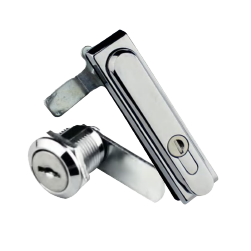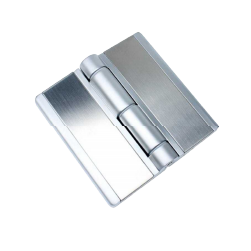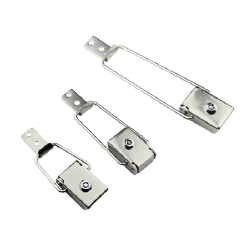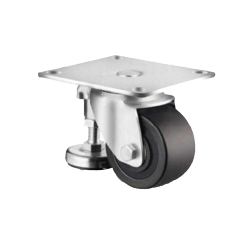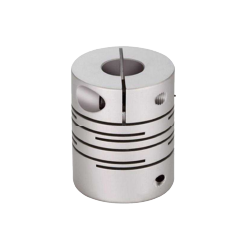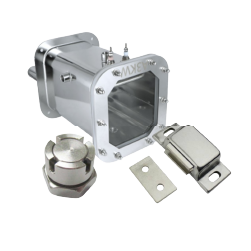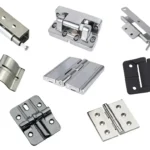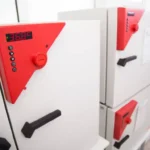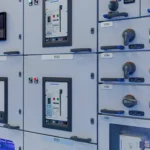
Durability is not a luxury in the world of modern manufacturing; it is a necessity. In the automotive industry as well as the aerospace industry, the quality and safety of a component are directly proportional to its capacity to endure environmental stress throughout its lifecycle. Corrosion is the most widespread and devastating of these environmental factors. To fight this, and to hasten the long business of natural exposure, industry turns into a very specific and very strong weapon: the salt spray chamber. This manual offers a professional-level analysis of these essential apparatuses, starting with the standards that should be used to operate them, up to the design principles that make them reliable.
What is a Salt Spray Chamber?
A salt spray chamber is a special laboratory equipment that is used to carry out an accelerated corrosion test. It is a closed chamber that forms a highly corrosive environment by atomizing a salt solution to a fine, dense salt fog at a controlled temperature. The main use of this equipment is to determine the corrosion resistance of materials and surface coatings. By exposing test specimens to such a harsh environment, manufacturers can model, within hours or days, the corrosive forces that could take months or years to manifest in the real world.
This corrosion testing is an essential process in product development and quality control. During the R&D stage, engineers can quickly compare various materials or organic coatings in the test chamber and decide whether the coating is appropriate to the intended use. To ensure quality, the salt spray test is an important test to check the efficiency of a production process. It can quickly check whether a batch of coated or finished parts is of the desired quality, and that the protective coating on the underlying metal is uniform and functional. This is proactive testing, which prevents early failure of the product, increases product life, and maintains the brand reputation of durability.
Understanding Key Corrosion Testing Standards
To ensure the repeatability and comparability of test results across different laboratories and industries worldwide, a series of stringent international standards has been established. These standards are important in the validation of any corrosion testing program. ASTM B117 and ISO 9227 are two of the most significant standards that are relevant.
ASTM B117 is arguably the most widely used standard of salt spray testing in North America and has a global following. It was the first internationally recognized salt spray standard, first published in 1939. It outlines the standard operating procedure of a neutral salt spray (NSS) cabinet. The standard defines the equipment, the reagent, a 5 percent solution of sodium chloride with a narrow pH range, and the operating conditions, such as a continuous chamber temperature of 35 °C. It also specifies how the atomized solution is collected to maintain the rate of fallout within a specified range, thereby providing a consistent test environment.
The most common international standard is ISO 9227, which is widely applied in Europe and Asia. It is analogous to ASTM B117 except that it has three types of tests in a single document: the neutral salt spray (NSS) test, the acetic acid salt spray (AASS) test, and the copper-accelerated acetic acid salt spray (CASS test). The latter two are salt spray tests that are modified to test decorative finishes such as electroplated chromium and nickel. The standard carefully describes the specifications of the equipment needed, such as the humidifying tower, the design of the spray nozzle, and the required temperature homogeneity. The two standards are critical in developing a sound comparative foundation to assess the corrosion resistance of materials and coatings.
Comparison of Major Corrosion Testing Standards
| Feature | ASTM B117 (NSS) | ISO 9227 (NSS) | ISO 9227 (AASS) |
| Test Type | Neutral Salt Spray (NSS) | Neutral Salt Spray (NSS) | Acetic Acid Salt Spray (AASS) |
| Salt Solution | 5% ± 1% Sodium Chloride | 50 g/L ± 5 g/L Sodium Chloride | 50 g/L NaCl + Glacial Acetic Acid |
| Solution pH | 6.5 – 7.2 | 6.5 – 7.2 | 3.1 – 3.3 |
| Chamber Temperature | 35°C ± 2°C | 35°C ± 2°C | 35°C ± 2°C |
| Fog Collection Rate | 1.0 to 2.0 mL/h per 80 cm² | 1.0 to 2.0 mL/h per 80 cm² | 1.0 to 2.0 mL/h per 80 cm² |
| Primary Application | Metals, coatings, automotive industry (esp. North America) | Metals and coatings (global standard) | Decorative coatings (e.g., copper-nickel-chromium) |
Key Components of a Salt Spray Chamber & How They Work
The smooth functionality of a salt spray chamber relies on the smooth cooperation of various important systems. These components are critical to the understanding of the operators as well as the engineers who design and specify these machines.
The Salt Fog Delivery System: This is the core of the chamber. It starts with a reservoir of the ready sodium chloride solution. This solution is pumped into a spray nozzle inside the chamber. At the same time, the compressed air is directed through a humidifying tower, a column of water that is heated to saturation with moisture. This warm, moist air is then passed through the nozzle, where it atomizes the salt solution, forming a fine, uniform salt spray fog or mist that fills the chamber. The accuracy of this system is critical in achieving the high rates of collection of mogs as stipulated by standards.
The Climate Control System: This system is in charge of a stable test environment. Electric heating elements, which are usually placed in a water jacket around the chamber or inside the chamber, are used to keep the chamber at a constant temperature. This is checked by the accurate sensors and controlled by the control panel. The humidifying tower temperature is also set separately because it has a direct influence on the temperature and humidity of the atomized fog.
The Chamber Body and Structural Hardware: The chamber is not just a box. It is a built-in container that is used to seal the corrosive environment and isolate it from the laboratory. The body itself is made of materials that are resistant to corrosion. One of the most important elements is the door that should allow easy access to the test specimens and, at the same time, form a perfect seal to ensure the integrity of the internal environment. The quality of mechanical hardware, such as hinges, latches, and handles, is the only thing that can determine the reliability of this whole structure: the body, the door, and its seals.
Critical Characteristics of a High-Reliability Chamber

While many chambers can produce a salt fog, a high-reliability chamber is defined by its ability to do so with exceptional precision, uniformity, and long-term stability. This reliability is built upon three pillars.
A Precise and Stable Control System
The control panel of the modern corrosion test chamber is the brain of the test chamber, and is usually a programmable logic controller (PLC) with a user interface. This system should be able to offer uncompromising control of the chamber temperature and the humidifying tower temperature, usually within a range of ±1 o C or less. It also controls the test time, can program complicated cycles in cyclic corrosion testing, and records all the data to make sure the test was conducted as per the chosen standard.
A Uniform Internal Test Environment
There is no sense in precision when the conditions are not the same across the chamber. A good chamber is constructed to make sure that the salt spray mist is well distributed and that there is an outstanding uniformity of temperature. This ensures that every test sample, irrespective of its location, is exposed to the same amount of corrosive stress. This similarity is a result of deliberate planning in the fog dispersion tower and the airflow patterns inside the chamber.
A Robust, Durable, and Stable Chamber Body
The physical structure of the chamber is its foundation. A precise control system is rendered useless if the chamber body cannot maintain its integrity over thousands of hours of operation.
Chamber Construction Materials
The inside is built of non-corrosive materials to ensure that the chamber itself is not a casualty of the corrosive assault it produces. The most common options are high-density Polyvinyl Chloride (PVC), Polypropylene (PP), or Fiberglass Reinforced Plastic (FRP), none of which are subject to the influence of the hot, salty environment.
The Critical Role of Mechanical Hardware
The mechanical hardware of the chamber body is the key to its long-term reliability. The door of the chamber is usually heavy and insulated, and is often more than 100kg. It has to be opened and closed thousands of times during its lifetime without losing the seal. This is a major engineering challenge.
- Here, the quality of hinges, latches, and handles comes into the limelight. Normal hardware will not last long and will exhibit signs of corrosion and structural breakdown. High-reliability chambers demand hardware that is specially designed to withstand these extreme conditions. The hinges used should be heavy-duty to support the entire weight of the door without sagging, and thus affecting the seal. Latches with high compression are necessary to push the door tightly and evenly against its gasket, ensuring an airtight interior.
- It is this degree of durability that has allowed major equipment manufacturers to collaborate with specialty component suppliers such as KUNLONG. One specialist company specializes in these issues, designing hardware in high-grade SUS 304/316 stainless steel that can survive 400-1000 hours of salt spray, which is many times longer than the 300-hour minimum of standard parts. Their hardware has undergone more than 24,000 cycles of operation and offers the structural stability that guarantees the long-term reliability of the chamber and the ultimate validity of the test results.
Essential Factors to Consider Before Purchasing
In the case of sourcing a salt spray chamber, a methodical analysis of the key parameters is required to make sure that the investment suits your particular needs.
- Internal Volume and Dimensions: Choose a chamber size that fits the quantity and size of your test specimens, with enough room around each item to allow free circulation of the mist.
- Operating Temperature: Although standard NSS tests are run at 35 °C, should you need cyclic corrosion testing, make sure that the temperature capabilities of the chamber are sufficient to satisfy the more complex standards.
- Standards Compliance: The manufacturer should clearly identify and certify that the performance of the chamber, especially the temperature control and the rate of fog collection, meets the international standards you need, i.e., ASTM B117 or ISO 9227.
- Construction Materials and Build Quality: Go beyond simple interior materials. Inspect the quality of the external construction and, above all, the mechanical hardware. Ask questions regarding the grade and the load rating of the hinges and latches as an indicator of the overall quality of construction.
- Installation and Utility Requirements: Determine the required infrastructure, such as the voltage and phasing needed to supply electrical power, a supply of purified water to use in the salt solution, a supply of compressed air, and drainage and ventilation of the exhaust of the chamber.
Applying These Principles to Other Environmental Test Chambers
The harsh conditions imposed on hardware in a salt spray test chamber can be a good lesson for all kinds of environmental test equipment. The concepts of structural integrity and component longevity are universal.
- Temperature and Humidity Chambers: These chambers expose components to severe thermal cycling, which makes materials expand and contract. This puts a lot of pressure on door hardware. An ideal seal is essential to ensure the correct humidity level, which requires the same high-quality compression latches and stable heavy-duty hinges.
- Industrial Ovens: These devices are frequently very large with heavy doors and run at high temperatures, so they need strong hardware that will not creep or break under constant thermal load.
- Thermal Shock Chambers: In these chambers, products are transported between very hot and very cold environments, which produces a tremendous mechanical load. Hardware should be extremely robust to be able to resist repeated shocks and vibrations.
Maintenance and Calibration Best Practices
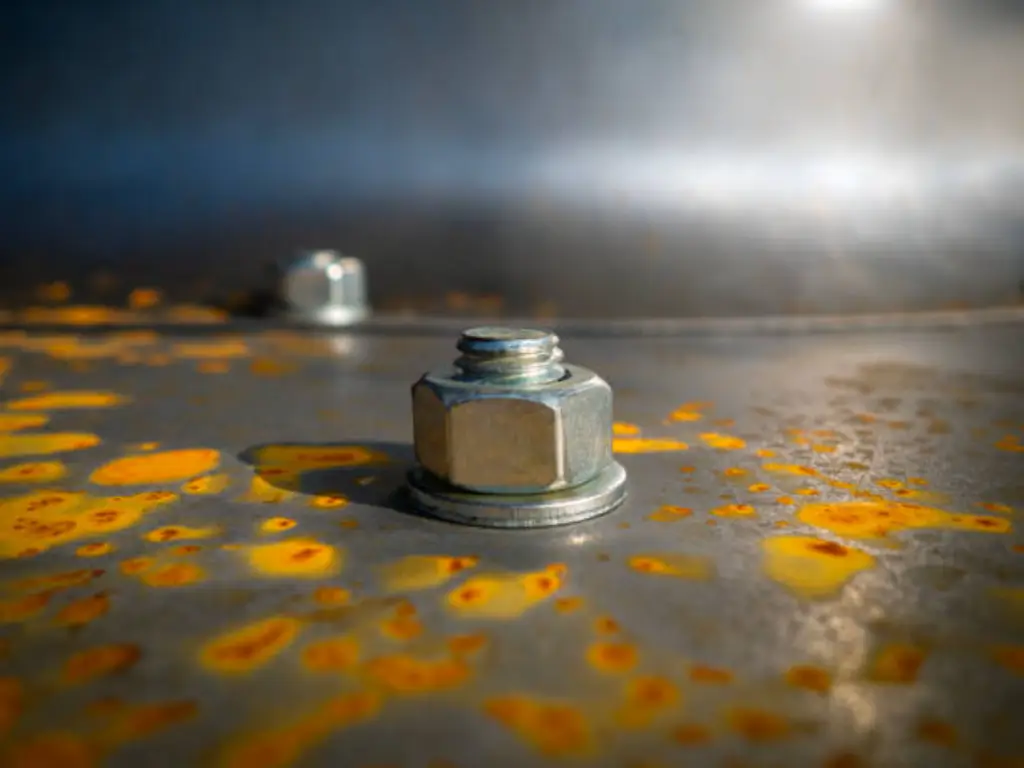
Having and running a test chamber is a long-term quality commitment. To maintain the accuracy and reliability of your corrosion testing program, proper maintenance and regular calibration are needed.
Routine cleaning should involve cleaning the salt solution tank to avoid contamination, cleaning and checking the spray nozzle to avoid clogs, and ensuring the integrity of the door seals. The inside of the chamber must be washed after some time, as per the recommendations of the manufacturer.
Calibration is the official procedure to ensure that the chamber is working within the tight tolerances of international standards. This includes calibrated sensors to test the temperature of the chamber, the temperature of the humidifying tower, and, most importantly, a test of fog collection to verify the rate and pH of the collected solution. This must be done regularly to ensure that your test results are valid.
Finally, the construction, procurement, and servicing of quality testing equipment starts with an investment in quality at all levels, including the complexity of the control system and the quality of the material of a single hinge. To engineers and designers specifying such equipment, it is an important step in the design process to consult with component experts who are familiar with the requirements of harsh environments. By involving experts such as KUNLONG in the early stages, you can avoid expensive structural failures, increase the working life of the equipment, and protect the integrity of your most important quality assurance processes.

